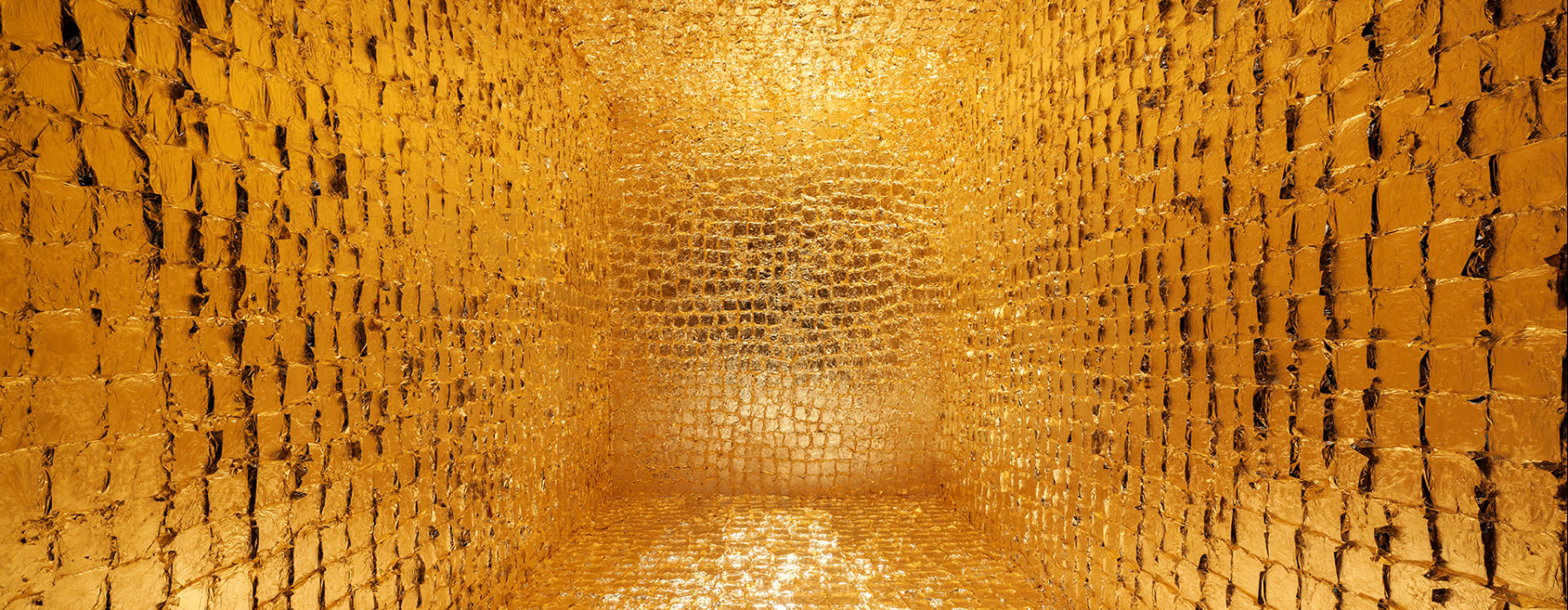
1, 2 Money Will Be Like Dross
Goldin+Senneby Simon Goldin and Jakob Senneby; Sweden, since 2004;
installation with replica alchemist’s furnace and a chest containing instruction manuals
wood, iron, paper; courtesy of SEB group Real Estate
Artist duo Goldin+Senneby compiled an instruction manual (including technical drawings, cut patterns, material samples and photo documentation) detailing how to build a replica of August Nordenskiöld’s 18th-century alchemist’s furnace. Anyone who bought it would also receive a licence. The manual is part of a numbered but unlimited edition. The price rises with each edition sold, making it increasingly expensive to build the replica furnace. As a result, ‘making gold’ also becomes more and more costly.
3. Athanor; 4,5,6,7 series Untitled
Esma Yiğitoğlu (Turkey, 1944 - Netherlands, 2009) terracotta; Netherlands; 2004; 2005-2007, courtesy of Wouter Welling
‘Art can only come from inner necessity. It has to be lived’, Esma Yiğitoğlu once wrote. Her work was inspired by Sufism, a mystical strain of Islam. Later ceramic sculptures refer to the related subject of alchemy. A title like Athanor refers to the alchemist’s furnace in which the process of transformation occurs. In this case, it is an inner transformation, a gilding of the spirit. The sculptures show the process of release from the human form, in a glow of red and white, the colours of the final stage of alchemy.
8. Terram
Ruudt Peters; gold leaf, RenShape, silver-gilt; The Netherlands,2015; courtesy of the artist
The pieces of jewellery that Ruudt Peters makes are actually more like objects that travel through people’s lives with them, subject to change along the way. The hidden meaning of the objects can be added to or revealed over time by use. Terram was inspired by Christian relics
9. Ouroboros Chocó
Ruudt Peters; gold, gold nugget, plaster, blackboard paint; The Netherlands, 1994; courtesy of the artist
The pieces of jewellery that Ruudt Peters makes are actually more like objects that travel through people’s lives with them, subject to change along the way. The hidden meaning of the objects can be added to or revealed over time by use. Beneath the blackboard paint of Ouroboros Chocó, for example, there is a real gold nugget.
10. Azoth
Ruudt Peters; gold leaf, polyester, silver; The Netherlands, 2004; courtesy of the artist
11. Ouroboros Wunstorf
Ruudt Peters; gold leaf, marcasite, silver; The Netherlands,1994; courtesy of the artist
Some of the objects are inextricably linked with the world of alchemy. The titles Ouroboros and Athanor are references to alchemy.
12. Sefiroth
Ruudt Peters; gold leaf, silver, polyester; The Netherlands, 2007; courtesy of the artist
Sephiroth is inspired by Kabbalah, a school of thought in Jewish mysticism. These objects are spiritual in nature.
13. Athanor
Ruudt Peters; copper, goose egg; The Netherlands,1992; courtesy of the artist
The titles Ouroboros and Athanor are references to alchemy.
14. Lapis de Goa in box
Lapis de Goa in box; India; 1700-1850; courtesy of Museum Boerhaave
Enterprising 17th-century Jesuit clerics in Goa (India) made Lapis de Goa – the much sought-after Philosopher’s Stone. This stone – in fact an artificial object resembling a stone – was believed to cure all ills, and even bring eternal life. Lapis de Goa was made of organic and inorganic material and included a trace of gold. It would sometimes be kept in a costly gold casing that was reputed to enhance its effect. The trade in these ‘stones’ was highly lucrative
15, 16. Dish and head decorated with acanthus leaves
Meissen; gilded porcelain; Meissen, Germany; c. 1720; courtesy of the Rijksmuseum
The Elector of Saxony, Augustus ll the Strong, King of Poland, took the German apothecary’s assistant and alchemist Johann Friedrich Böttger (1682-1719) captive. He was believed to have the ability to make gold. There, Böttger toiled in vain, attempting to make gold for the king. He did however succeed in something else, and his discovery was worth its weight in gold! He found the correct composition for perfect porcelain, which had had to be imported from China up to that point.
17. Alchemist’s medallion
Bronze; Brussels, Belgium; 1617; courtesy of Museum Boerhaave
Alchemist’s medallions were issued to commemorate successful transmutations – the transformation of one chemical element into another. They were also designed to give a positive impression of the work of alchemists,
18. Kabbalistic medallion
Tin alloy; 1700-1750; courtesy of Museum Boerhaave
19. Alchemist’s medallion
Elektrum; Germany; 1550-1600; courtesy of Museum Boerhaave
20. Alembic
Iron; 1850-1900; courtesy of Museum Boerhaave
21. Hourglass in wooden stand
Glass, wood; 1750-1800; courtesy of Museum Boerhaave
The hourglass is filled with brown sand and runs for approximately 30 minutes.
22. Melting pot
Earthenware; 1900-1950; courtesy of Museum Boerhaave
23. Small kiln for chemical tests
Clay, metal bands; Netherlands; 1850-1900; courtesy of Museum Boerhaave
24. Hessian crucible
Earthenware; Hesse, Germany; 1850-1900; courtesy of Museum Boerhaave
25. Crucible
Earthenware; 1800-1900; courtesy of Museum Boerhaave
26. Retort
Stone; 1850-1900; courtesy of Museum Boerhaave
27. Distillation flask
Stoneware; 1800-1850; courtesy of Museum Boerhaave
28. Retort in light green glass
Glass; 1850-1900; courtesy of Museum Boerhaave
29. Group of sculptures
Cornelius Rogge (Netherlands,1932-2023); Ceramic; Netherlands; 1996, courtesy of Eyco Rogge
Psychologist Carl Gustav Jung (1875-1961) regarded the individuation process as the most important goal in a person’s life. Everyone is seeking to achieve the best they can, in a continuous process of change, taking their progress one step further each time.
The same development is found in alchemy. The transformation of lead, for example, into gold in a laboratory symbolises the inner gilding of the alchemist. Cornelius Rogge depicted this process in the sculpture of potters, people who spend their life trying to make the finest possible gold jar. One barely achieves it, while another manages to make two. But it is not the result that counts, it is the effort.